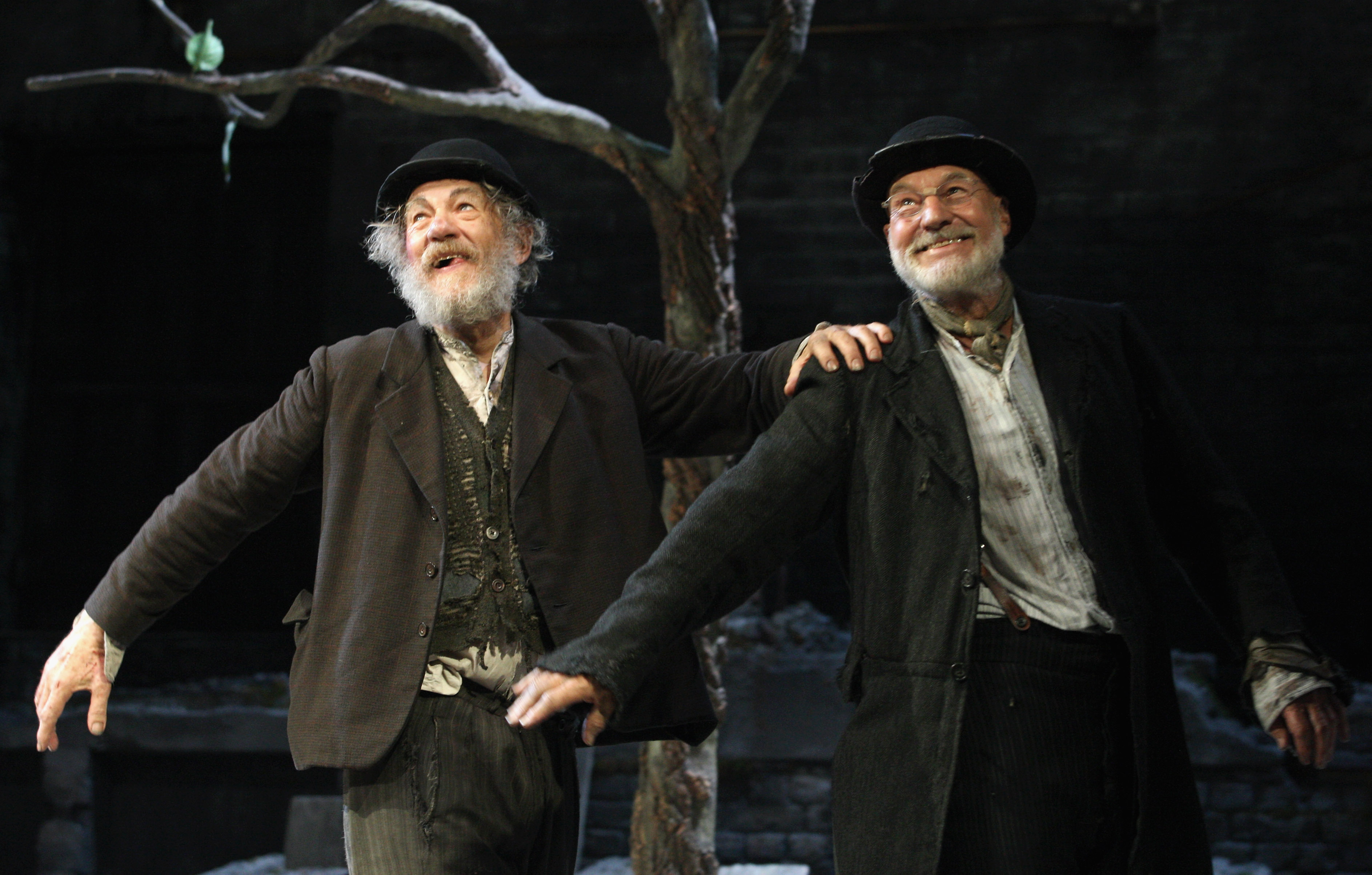Is This Thing Going to Happen or What? Broadcast Enters NAB 2023 Still Waiting For the ATSC 3.0 Train to Arrive (Bloom)
So-called NEXTGEN TV is a tech TV version of 'Waiting for Godot,' where an unspecified something is imminently arriving to make everything better ... yet never quite materializes

NAB’s annual conference starts later this week. And sure as the giant broadcaster confab returns to the cavernous confines of the Las Vegas Convention Center every spring, so too will the latest news, announcements, events and releases touting the further, yet still glacial spread of ATSC 3.0, the digital broadcasting standard that promises so much we’re still waiting to receive.
Branded these days as the all-caps NEXTGEN TV, ATSC 3.0 is a train that’s been just about to arrive for so long I feel like a stranded commuter falling asleep on a bench at the station. It’s like a tech TV version of Waiting for Godot, where an unspecified something is imminently arriving to make everything better, yet never quite materializes before we fade to black.

It’s a shame, too. There’s so much to like about ATSC 3.0: 4K resolution! Scalable, cost-efficient distribution! Internet protocol! No need for expensive cable or satellite subscriptions! Multiplexed datacasting! New business models! Personalized audio! Sports betting! Geo-targeted, interactive advertising! Better emergency broadcasts! Data services for cars! Pretty heady stuff for a medium that’s been around for nearly a century.
The headlines touting all that have been arriving by the bushel over the years, especially around NAB, with near-endless promises of God(ot)-like powers:
- NAB 2016: A Lot of Firsts for ATSC 3.0 (2016)
- ATSC 3.0 Will Foster Innovation, Diversity (2017)
- NAB To Shine Spotlight on ATSC 3.0 Tech (2017)
- NAB to FCC: ATSC 3.0 Future is Now (2017)
- Make Way for ATSC 3.0 (2018)
- ATSC 3.0 Marches On (2018)
- CTA Unveils ATSC 3.0 Branding (2019)
- Sinclair Launches ATSC 3.0 Chips at CES (2019)
- ITU Backs ATSC 3.0 as International Standard (2020)
- ATSC 3.0: Small Cities, Big Opportunities (2020)
- Sinclair and One Media 3.0 Look at ATSC 3.0 Opportunities Beyond Broadcast (2021)
- ATSC 3.0 Signals Now Blanketing Richmond (2022)
And so on. You get the idea. That sampling is just stories we've written at Next TV and its sibling publications, and not even all of those since 2014, when work on the new standard began in earnest.
Godot is coming, though, I promise you. Just not today.
The final(-ish) ATSC 3.0 standard officially launched just over half a decade ago, as part of an FCC-blessed voluntary launch prefaced by a test 4K HD broadcast of the Winter Olympics on WRAL Raleigh, North Carolina.
The smarter way to stay on top of the streaming and OTT industry. Sign up below.
Admittedly, the rollout since then has been tricky. The Federal Communications Commisson let stations decide when to shift to 3.0, but required them to keep simultaneously broadcasting in the older ATSC 1.0 standard for those whose equipment hadn’t quite caught up.
Evoca tried one innovative approach, leveraging ATSC 3.0 to provide a legitimate alternative to the cable bundle in western cities such as Denver and Boise, Idaho, including access to regional sports networks that were kept off or dropped by local cable operators, and more.
But it ceased operations at the end of last year because of funding problems. And the list of others exploiting ATSC 3.0’s potential feels woefully brief.
More recently, cable operators such as Charter Communications have been griping about the thousands of potential configurations that make it difficult for them to deliver an ATSC 3.0 signal over their wired networks. That seems like a surmountable technical issue, but isn’t helping extend the addressable audience for local digital broadcasters.
More problematically, Charter also argued that broadcasters seemingly can’t decide what to do with ATSC 3.0’s many possibilities. Worse, many of the things made possible in ATSC 3.0 — movie downloads, video on phones, data delivery to cars and Lord knows lots of sports betting information — are already being done with other devices.
That matters, Charter said in meetings with lawmakers and regulators, because both station indecision and service duplication will reduce consumer demand for ATSC 3.0-capable equipment, slowing the rollout even more.
And that Is, indeed, a problem that has been bedeviling this platform for years. I remember presiding over a podcast years ago, with a colleague at a former employer, talking with Rich Greenfield, the pot-stirring analyst now with LightShed Partners.
Greenfield’s take back then, echoed by my colleague: ATSC 3.0 was a solution looking for an audience. It was going to take too long to arrive in a fast-changing market for TV-like experiences. A business case that could have been made in, say, 2005 was unlikely to matter in 2020. And in truth, the concerns Greenfield voiced then have only worsened in the pandemic-era streaming boom of the ‘20s.
The real issue wasn’t what ATSC 3.0 could do, whenever it might be deployed in sufficient numbers to drive significant consumer uptake. It was whether anyone, or enough anyones, would care by the time the rollout was largely in place.
Yes, there are reports of penny-pinching millennials and zoomers becoming astonished that they could watch broadcast TV for free, plus the modest price of a cheap digital antenna. If you have a house with a clear beam from the broadcast tower, you’re golden.
But that doesn’t fix another, even bigger problem in the streaming era: what to watch on broadcast. Since the pandemic hit, media companies have been strip-mining their broadcast networks of most meaningful programming, shifting shows partly or wholly to their streaming services. What remains is, with some exceptions, seriously weak (and cheap) tea.
That’ll only get worse if, as has already been floated, NBC ends national programming in the 10 p.m. prime-time slot (which likely would send the other networks over the same cliff). And imagine what happens if sports rights, specifically for the NFL, continue to bleed off broadcast and cable and into streaming, hybrid broadcasts, and the tech giants’ outlets.
“Legacy media is bleeding out and downsizing,” as Greenfield’s latest LightShed report suggested, in a look at recent earnings calls/brags by the biggest station group, Nexstar. “The audience for local weather and news is … not valuable to anyone in a demographic that advertisers, or distributors, covet. ... Retrans is about one thing and only one thing: the NFL.”
And that’s the essential challenge facing the engineers driving the ATSC 3.0 train. By the time the train finally, finally, actually arrives in the station, who’s going to buy a ticket and get on board? Probably not many. At least we can always muse about what might have been had this train showed up in, say, 2013 instead.
David Bloom of Words & Deeds Media is a Santa Monica, Calif.-based writer, podcaster, and consultant focused on the transformative collision of technology, media and entertainment. Bloom is a senior contributor to numerous publications, and producer/host of the Bloom in Tech podcast. He has taught digital media at USC School of Cinematic Arts, and guest lectures regularly at numerous other universities. Bloom formerly worked for Variety, Deadline, Red Herring, and the Los Angeles Daily News, among other publications; was VP of corporate communications at MGM; and was associate dean and chief communications officer at the USC Marshall School of Business. Bloom graduated with honors from the University of Missouri School of Journalism.

